Using AWS Lambda Function to Identify Unused AWS Resources
 Heloise Reina Viegas
Heloise Reina Viegas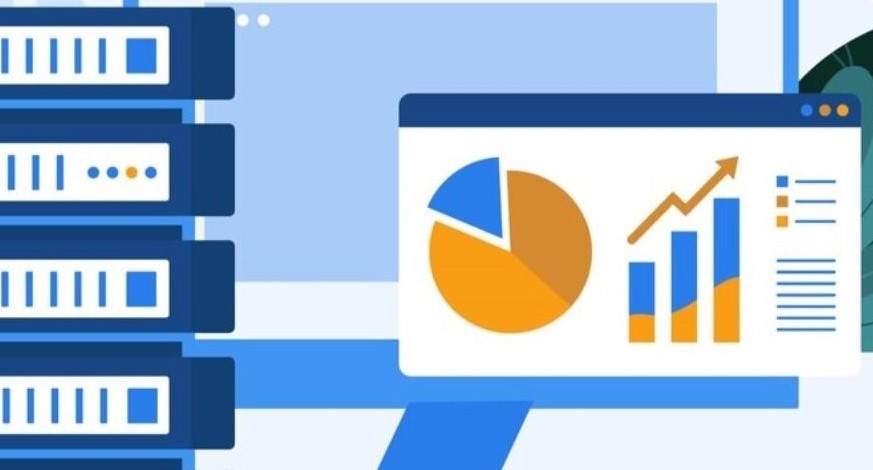
In this blog post, we’ll walk through the process of creating an AWS Lambda function that identifies unused AWS resources, specifically focusing on EBS volume snapshots older than one year. We’ll use various AWS services and tools, including Python with the Boto3 module, AWS Lambda, EventBridge, SAM (Serverless Application Model), and SNS (Simple Notification Service).
Tech Stack
Python: Code to fetch unused resources using the Boto3 module.
Lambda: To execute the function.
EventBridge: To trigger the Lambda function.
SAM: To deploy Lambda and EventBridge.
SNS: To notify the user.
Steps
Create Lambda using SAM
Write Python Code
Build and Test Lambda
Create EventBridge Rule
Create SNS to Notify
Creating Lambda using SAM
Connect to AWS account from CLI.
Run
sam initwith the options as shown: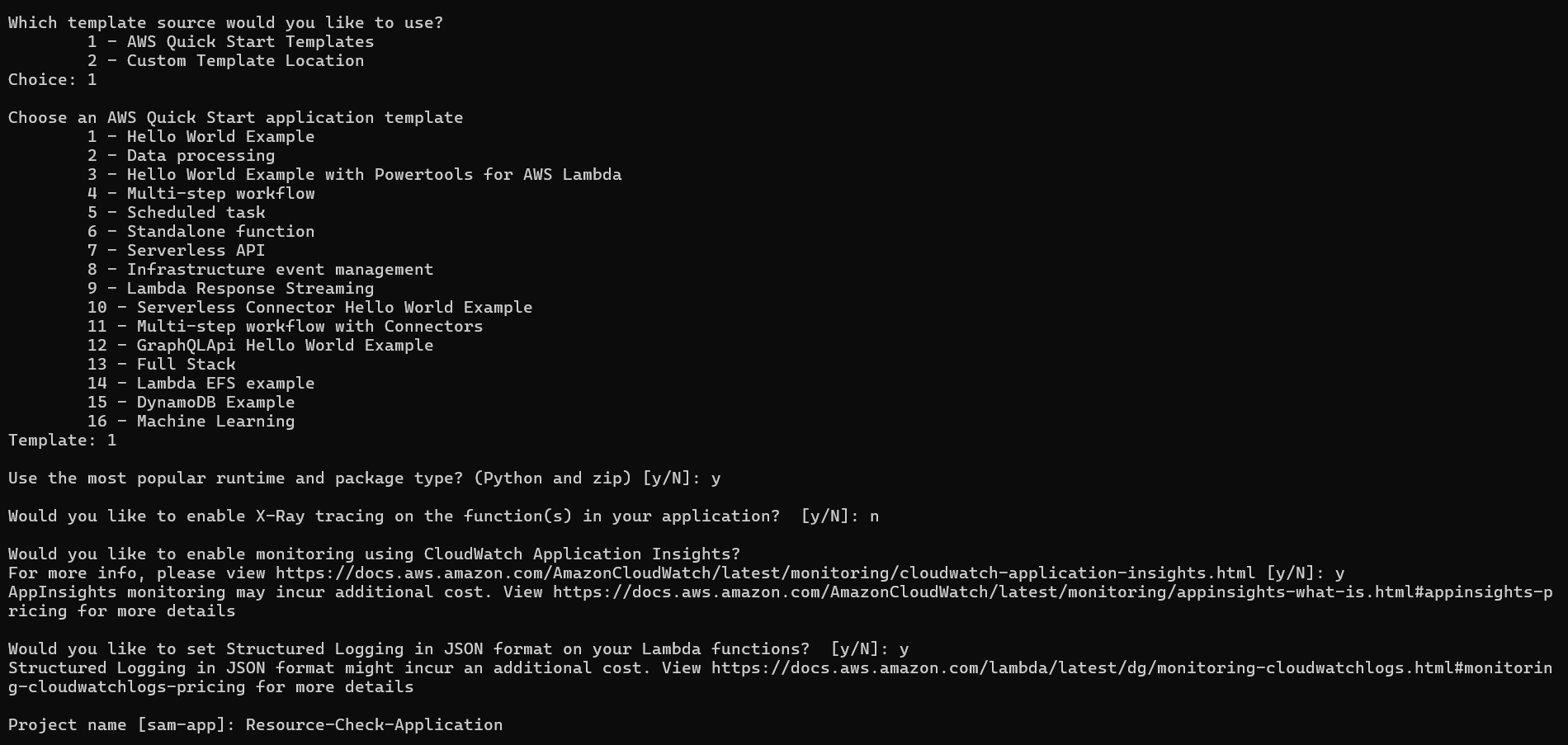
This will create a folder with the name Resource-Check-Application, with these files.

Rename the
hello_worldfolder tosnapshot_age.Replace
app.pywith the Python code below to fetch snapshots.Invoke
check_age()in thelambda_handlerand print the list of snapshots it returns.
Writing the Python Code
Using the Boto3 module, we can fetch EBS volume snapshots that are older than one year. This is a generic use case, and you can modify the condition as needed.
Import the boto3 and datetime modules.
Create a client object for the Amazon EC2 (Elastic Compute Cloud) service using the Boto3 library.
Define the check_age() function:
Fetch all snapshots created by users in the AWS account, OwnerIds='self' ignores snapshot that AWS has internally created.
Loop through the snapshots and find those that are older than a year. Store these in a list called snapshot_date.
Add appropriate exceptions, here we just have InvalidSnapshot.
Refer below for complete code.
import json
import boto3
from datetime import datetime, timezone, timedelta
#from dateutil import parser
# import requests
session = boto3.Session() #profile_name='Certification' used to test from cli, used for SSO user
ec2=session.client('ec2')
present = datetime.now()
def check_age():
snapshot_date=[]
try:
snapshots = ec2.describe_snapshots(OwnerIds=[
'self'
])
one_year_ago = datetime.now() - timedelta(days=365)
print(one_year_ago)
for snap in snapshots['Snapshots']:
# print(snap['SnapshotId'])
#snapshot_date[snap['SnapshotId']]=snap['StartTime']
# print(snap['StartTime'])
if (snap['StartTime'].replace(tzinfo=None)<one_year_ago):
snapshot_date.append(snap['SnapshotId'])
#print(snap['SnapshotId'])
return snapshot_date
except ec2.exceptions.from_code('InvalidSnapshotIDNotFound'):
return f"Snapshot not found: InvalidSnapshotIDNotFound"
except Exception as e:
return f"An error occurred: {e}"
def lambda_handler(event, context):
snapshot_age=check_age()
print(snapshot_age)
Configuring the Lambda Function and EventBridge Rule
Edit template.yaml:
Under resources section rename the function name to
CheckSnapshotAgeFunction.Update
CodeUritosnapshot_age/.Add IAM policy to describe snapshots, i.e.
'ec2:DescribeSnapshots'Add
ResourceCheckEventBridgeRuleresource that specifies the above lambda function as it’s target and has a schedule that will trigger it.Add
LambdaInvokePermissionthat will give the Event Bridge rule permission to run the lambda function.
Complete project is available here.
AWSTemplateFormatVersion: '2010-09-09'
Transform: AWS::Serverless-2016-10-31
Description: >
Resource-Check-Application
Sample SAM Template for Resource-Check-Application
# More info about Globals: https://github.com/awslabs/serverless-application-model/blob/master/docs/globals.rst
Globals:
Function:
Timeout: 45 #increase timeout
MemorySize: 128
# You can add LoggingConfig parameters such as the Logformat, Log Group, and SystemLogLevel or ApplicationLogLevel. Learn more here https://docs.aws.amazon.com/serverless-application-model/latest/developerguide/sam-resource-function.html#sam-function-loggingconfig.
LoggingConfig:
LogFormat: JSON
Resources:
CheckSnapshotAgeFunction:
Type: AWS::Serverless::Function # More info about Function Resource: https://github.com/awslabs/serverless-application-model/blob/master/versions/2016-10-31.md#awsserverlessfunction
Properties:
CodeUri: snapshot_age/
FunctionName: Check_Snapshot_Age
Handler: app.lambda_handler
Runtime: python3.10
Architectures:
- x86_64
Policies:
- Version: '2012-10-17'
Statement:
- Effect: Allow
Action:
- 'ec2:DescribeSnapshots'
Resource: '*'
ResourceCheckEventBridgeRule:
Type: 'AWS::Events::Rule'
Properties:
Name: MyEventBridgeRule
Description: 'Rule to trigger Lambda function'
State: 'ENABLED'
Targets:
- Arn: !GetAtt CheckSnapshotAgeFunction.Arn
Id: 'MyLambdaFunctionTarget'
ScheduleExpression : cron(0/1 * * * ? *)
LambdaInvokePermission:
Type: 'AWS::Lambda::Permission'
Properties:
FunctionName: !Ref CheckSnapshotAgeFunction
Action: 'lambda:InvokeFunction'
Principal: 'events.amazonaws.com'
SourceArn: !GetAtt ResourceCheckEventBridgeRule.Arn
Building and Deploying the Lambda Function
Run
sam buildin the terminal.
Run
sam deploy --guided --profile <profile-name>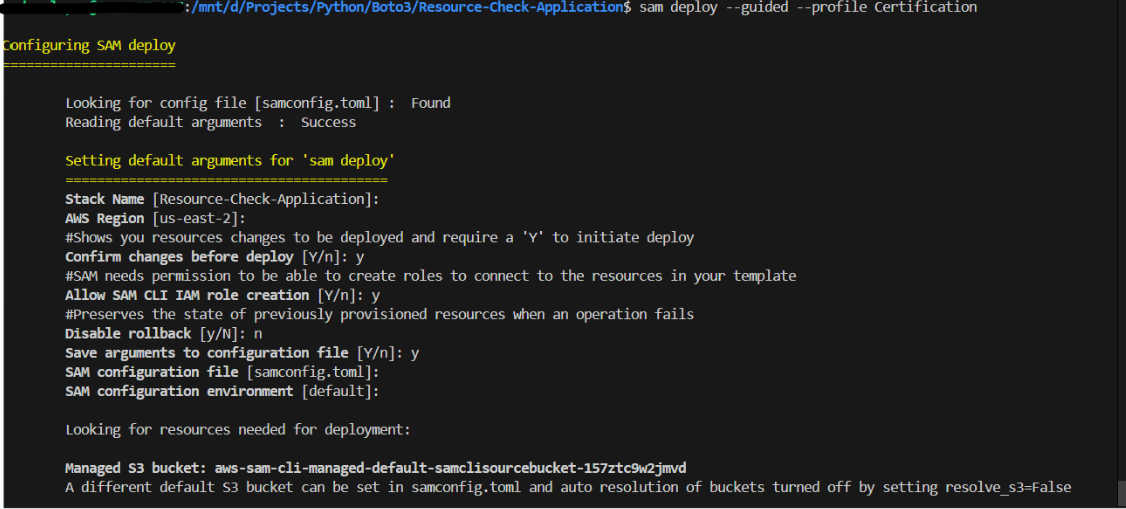
This will show the resources that will be created in AWS account. Once verified enter “y”
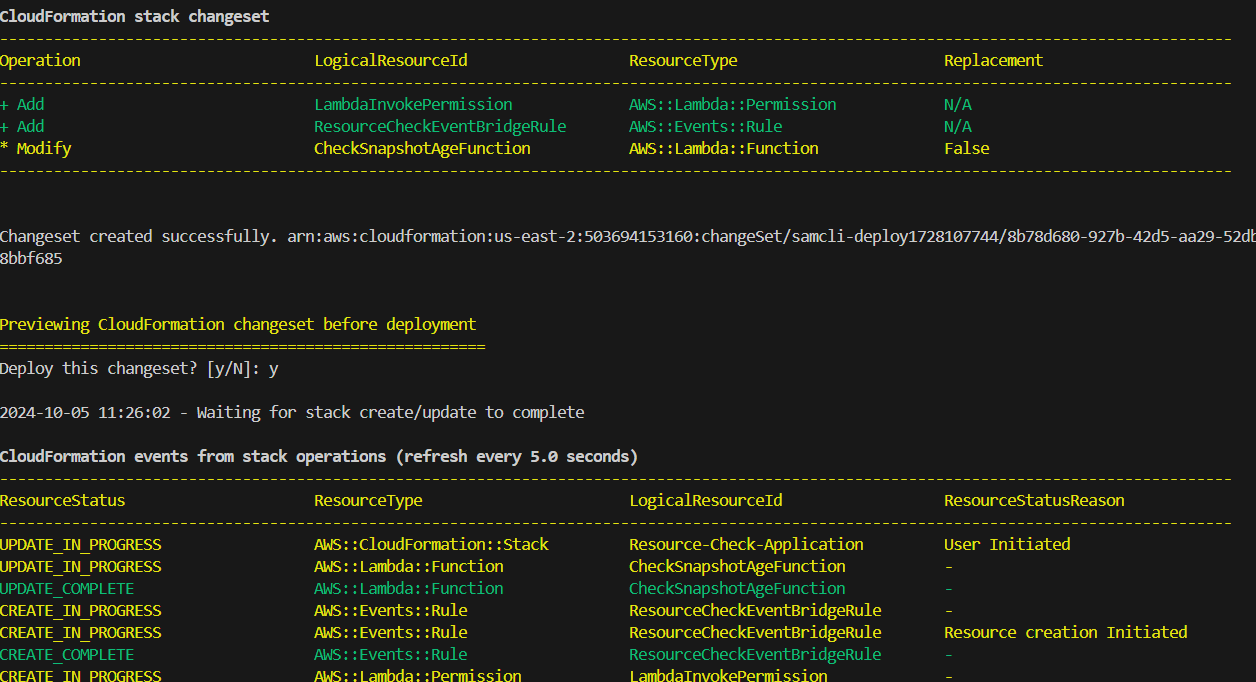
The Lambda function will be triggered every minute. We can view the output in the Cloud Watch logs.
Go to cloud formation stack.

Find the Stack we deployed, go to the lambda function.
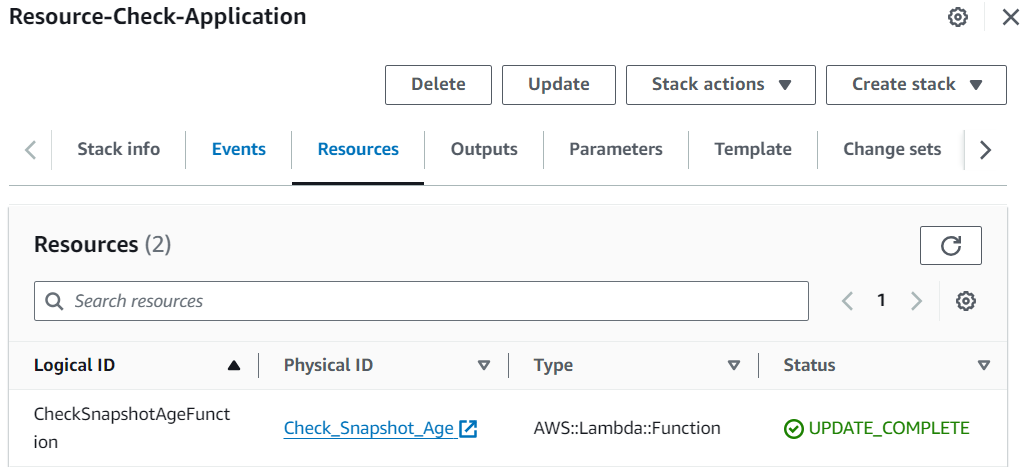
Under the monitor tab click on
ViewCloudwatchlogs, find the most recent log group.
Here we see that every minute the list of Snapshots older than a year are printed.
Notifying users via email
We can also configure SNS to send an email to the respective users instead of checking logs in CloudWatch.
Update the template.yaml file to send email notifications.
Create an Environment variable
SNS_TOPIC_ARNfor the SNS topic in the lambda function, this will be used in the code to fetch the SNS topic.Add IAM policy to allow the
CheckSnapshotAgeFunctionto publish to SNS, i.e.sns:PublishCreate the SNS Topic and Subscription resources.
Environment:
Variables:
SNS_TOPIC_ARN: !Ref SNSTopic
SNSTopic:
Type: "AWS::SNS::Topic"
Properties:
TopicName: "POC-AWS-Cost-Optimization"
DisplayName: "POC-AWS-Cost-Optimization"
SNSSubscription:
Type: "AWS::SNS::Subscription"
Properties:
TopicArn: !Ref SNSTopic
Protocol: "email"
Endpoint: "heloise@abc.com"
You also need to update the Lambda function code to publish the list of old snapshots to the SNS topic:
sns_client = boto3.client('sns')
sns_topic_arn = os.environ['SNS_TOPIC_ARN'] #fetch sns topic from template.yaml
def lambda_handler(event, context):
snapshot_age = check_age()
response = sns_client.publish(
TopicArn=sns_topic_arn,
Message=f"{snapshot_age}",
Subject='POC - AWS Cost Optimization'
)
print(snapshot_age)
To deploy run sam build and sam deploy like before.
Confirm the email subscription:

Once confirmed, we will receive an email every time the lambda function is triggered:

Enhancements
This functionality can be extended to monitor S3, EBS volumes and EC2 etc. For example, here I have created code to,
Fetch S3 buckets with full access and public access.
Unused EBS volumes.
Cleanup
Delete the stack from Cloud Formation once verified and tested.
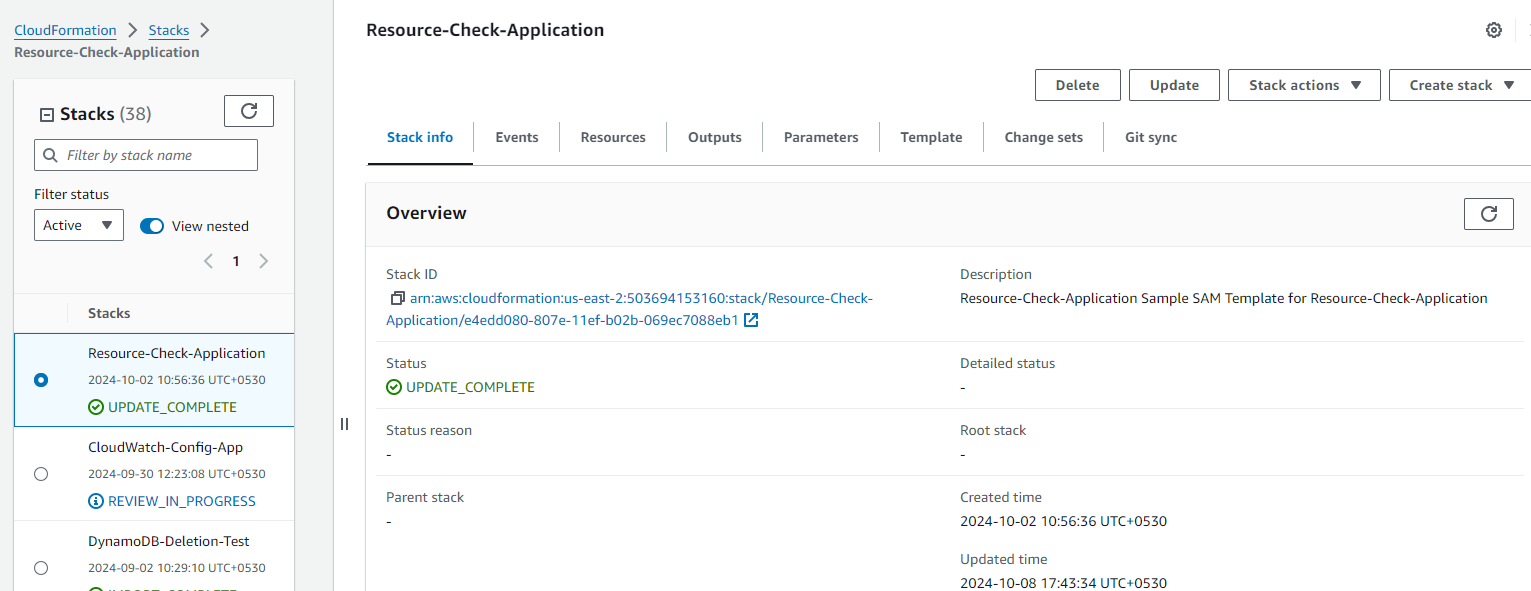
Conclusion
By following these steps, you can automate the process of identifying and managing unused AWS resources, helping to optimize costs and improve resource management. Additionally, you can extend this solution to check for other resources like S3 buckets with public access, unused EBS volumes, and more.
To learn more about AWS cost optimization, this is a great article.
Happy learning! 🚀
Subscribe to my newsletter
Read articles from Heloise Reina Viegas directly inside your inbox. Subscribe to the newsletter, and don't miss out.
Written by

Heloise Reina Viegas
Heloise Reina Viegas
Exploring DevOps tools and practices.